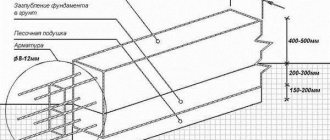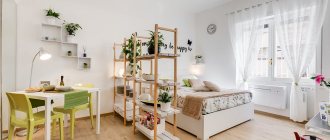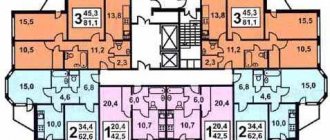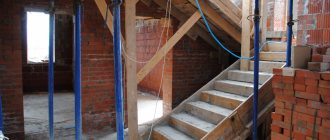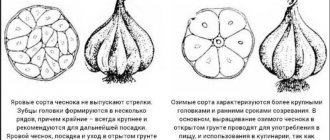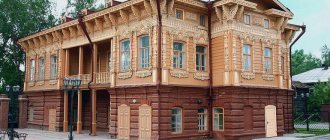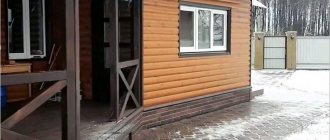Types of stylistic directions in which palace-style houses are built
Projects of elite estates and palaces are quite diverse. At the moment, the construction of houses in the palace style is becoming more and more popular. The buildings are not only distinguished by their scale, but also by their original design. There are some stylistic designs that are used to build such majestic buildings:
- classicism.
- baroque,
- Gothic,
- Renaissance.
House project in palace style
Which countries are open to Russians?
If you're planning a trip abroad, check our interactive border reopening map. Before booking your trip, be sure to check your local government's current travel advisories.
Classicism
Classicism is an architectural movement of the 17th-19th centuries. In most cases, in the construction of a house in this stylistic direction there is a peculiar appeal to the era of antiquity.
Projects of palaces in this style are very diverse. They have antique directions, which at that time were diluted with modern building materials.
Empire style house
The main characteristic of the direction is that the arch becomes flatter and lower; very often molding is used under it.
The postulate of classicism is the beauty of natural forms, which can be understood using fairly simple mathematical calculations and translated into reality thanks to the skill and skill of ancient master builders.
As for the shape in which the palaces were built, it was slightly elongated. All buildings were distinguished by their compactness and variety of shapes:
- U-shaped,
- W-shaped,
- U-shaped.
Such buildings with a courtyard, in which there was a very beautiful garden with numerous flower beds and tiled, were particularly attractive. Very rarely, palaces were found in a square shape, and if they were found, they did not have a courtyard.
The roofs of palaces in classicism were low and in most cases had flat shapes. They were decorated with a parapet, which most likely had the character of a decorative decoration. All forms of the building were proportional and had rectilinear shapes. To decorate the corners of such a building, stucco molding and majestic columns were used that supported the arch of the building. They could be found not only in the exterior, but also in the interior decoration in white.
Stone house in classicism style
Sometimes some changes were made in the design. In those centuries, everything depended on the capabilities of the owner of the palace. In expensive palaces one could see gilded or marble columns. But they were most often used to decorate the ballroom in the center of the palace.
The buildings are large buildings that have two to three floors with beautiful stained glass windows. At the moment, this stylistic direction is also very popular. Houses are also built on its basis, which do not have such significant volumes, but in appearance they still resemble a classic palace.
Project of a modern two-story private house in classicism style
A modern building is built using various materials:
- bricks,
- aerated concrete,
- foam concrete,
- shell rock.
All these materials are fire resistant and very durable.
Previously, all palaces were built in most cases using earth block or earthen block construction (earth blocks).
Sheremetev Castle in Yurino
Location: Yurino, Republic of Mari El
The beautiful castle in the village of Yurino belonged to the noble Sheremetev family. Photo: castlesheremeteva.rf
The elegant castle with crenellated towers, stained glass windows and mosaic floors belonged to the prominent boyar family of the Sheremetevs. It was built by lieutenant of the Cavalry Regiment Vasily Petrovich Sheremetev and his wife Olga Dmitrievna, maid of honor of the imperial court.
The requirements of the noble family were the highest: architects Alfred Parland (the “author” of the St. Petersburg Church of the Savior on Spilled Blood) and Pavel Petrovich Malinovsky worked on the future castle, and materials, furniture and interior items were brought from abroad. This is how a majestic eclectic building grew up on the banks of the Volga.
Once you've wandered the well-kept halls and absorbed the stories of the passionate tour guides, don't rush to leave. There are guest rooms right in the Sheremetev Castle: spend the night in one of them and find out if there are ghosts in the 19th century buildings.
By searching on Skyscanner, in addition to safe flights, you can choose hotels with a high rating for cleanliness and free cancellation
Baroque
There is another stylistic direction that was used for the construction of palaces - the Baroque style. Translated, “baroque” means “bizarre.” Palaces that are decorated in this way have always been considered a sign of power and authority and are distinguished by luxury and massiveness.
English palace in baroque style
Distinctive features of the Baroque style:
- dynamism,
- pomp,
- pomp,
- solemnity.
This style of construction was intended for the organization of garden and park ensembles. All of them did not have clear forms.
In most cases, in this stylistic direction all kinds of building designs are merged. There is a very interesting play of color and quite bold contrasts in large-scale construction. Buildings that were built in this way could have several floors, but, unlike classicism, they could be unevenly distributed throughout the palace. It is for this reason that one could find a terrace on the second floor, which was comfortably located on the “ceiling” of the first (the first floor protruded and created a platform for organizing such a balcony for relaxation).
All Baroque buildings are picturesque and decorative. Their design combines not only the architecture of that time, but also certain sculptural trends.
Baroque house
This style appeared after the Renaissance, and it did not follow all the acceptable directions and clear lines of buildings, as in the Renaissance style. Curvilinear lines and directions were present not only during construction, but also during design. There was a very rich decoration of the buildings with sculpture and modeling.
The design of the Winter Palace was designed in the direction of classicism or baroque. These two stylistic trends became very popular in those centuries due to their power and luxury.
The famous Winter Palace in St. Petersburg
What else to read to make your trip to Russia a success:
- Coronavirus: travel tips. The news page is updated every day
- Staycation during a pandemic: ideas and tips for a relaxing holiday in Russia
- Christmas markets in Russia in 2020–2021. Will the main fairs in Russia open this year?
- Everything you need to know about flexible travel booking conditions. How to get the most out of flexible tariffs
- 11 inspiring hotels in the Russian mountains: from Krasnaya Polyana to the Urals
Gothic style
This stylistic direction was quite often used for the construction of palace houses of the 13th-15th centuries. The building designs were distinguished by their brightness and unusual design.
Various techniques and means were used for finishing:
- gilding,
- stained glass,
- a natural stone,
- glass and much more.
The Gothic style palace has expressiveness and spiers rising above the roof of the building.
Gothic palace
Due to the fact that the roofs of the palaces had semicircular shapes made of glass, this significantly loaded the walls of the building, and large windows were cut into them. Sometimes their size reached the height of the wall itself. Thus, this stylistic design allowed the art of stained glass to develop well, since all the windows were designed this way. Due to this, the entire palace became bright and large.
Renaissance
This style in the construction of palaces was quite common. It can most likely be called decorative rather than constructive. All building lines were taken from the Greco-Romans.
The windows in castles were initially made semicircular, but over time they began to cut straight windows. All the palaces and castles simply amazed with their power and originality. As a rule, the decoration of buildings and inside and outside was done using marble.
In addition to this, they could use:
- wood (black or white);
- ivory;
- other natural stone;
- sandstone.
Renaissance-style palace in England
All the ornaments that were applied to the wall were taken from ancient culture. As for the color scheme, it was very diverse. They could use dark and gloomy shades, soft and light tones. There is even the use of saturated and quite bright colors. But, basically, the design was dominated by cool shades of white and other pastel colors.
Modern private house in Renaissance style
This stylistic direction is considered in demand today. Most new styles began to draw some of their directions from him. It can be used to build a palace-style house, which, of course, will be slightly smaller in scale than the palaces of that century, but will still amaze with its power. The building forms can be any, but, as a rule, palaces had similar forms in the classicist style.
Rococo palace in Prague
Palace style houses can be made in any style or direction. The main thing is that the landscape design around it should also correspond to the majestic structure.
